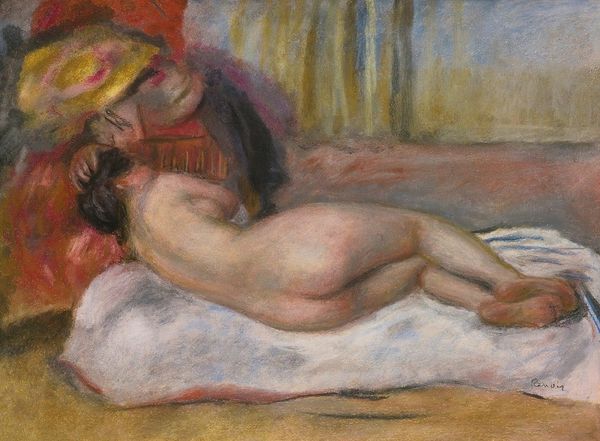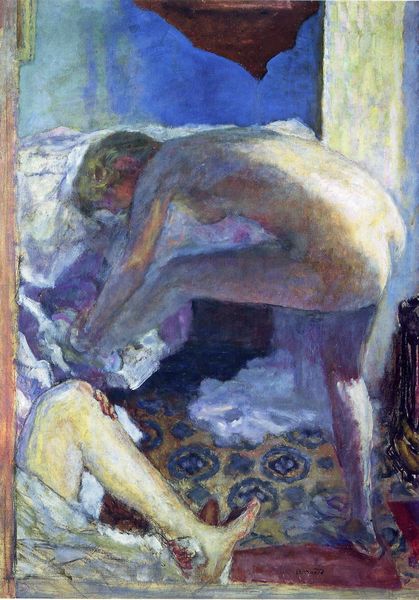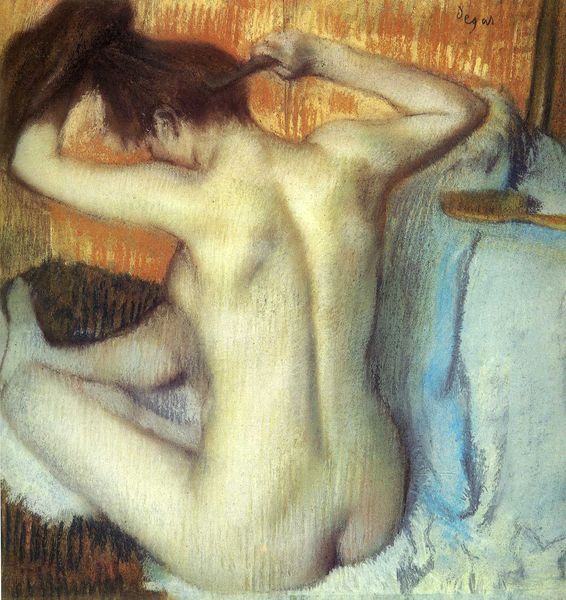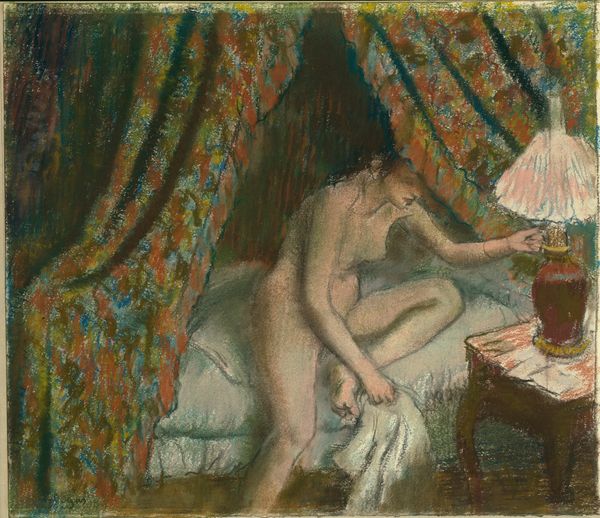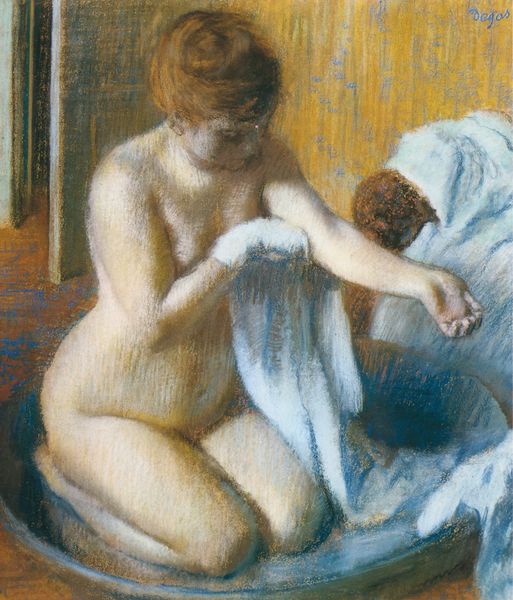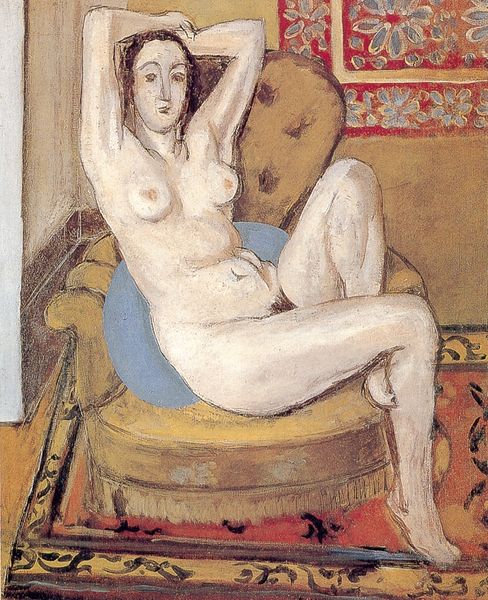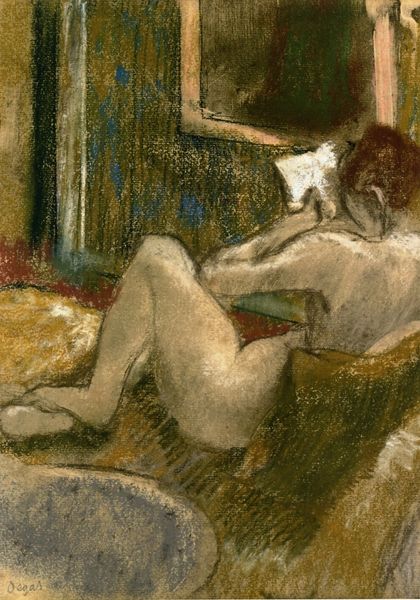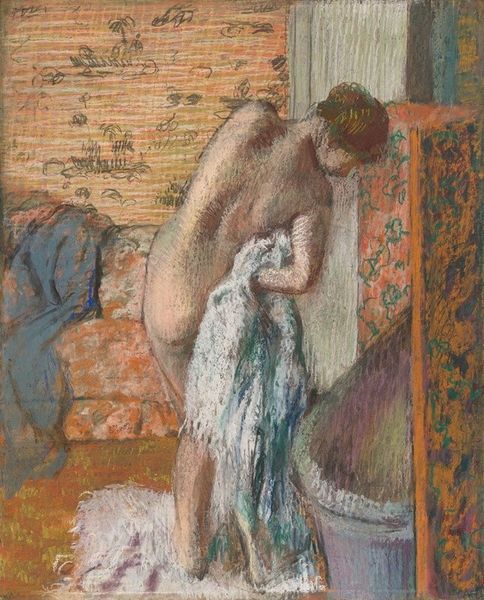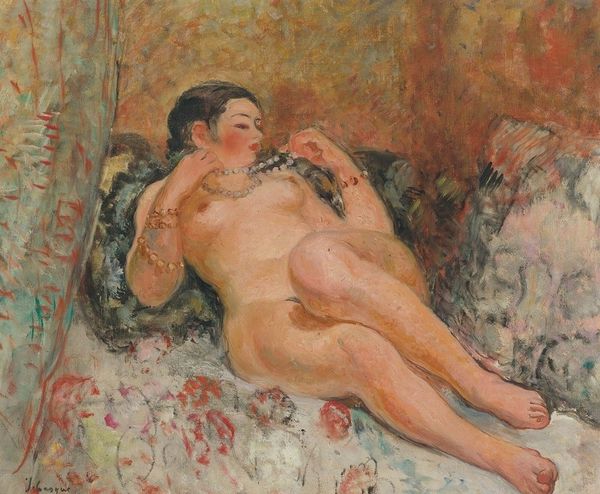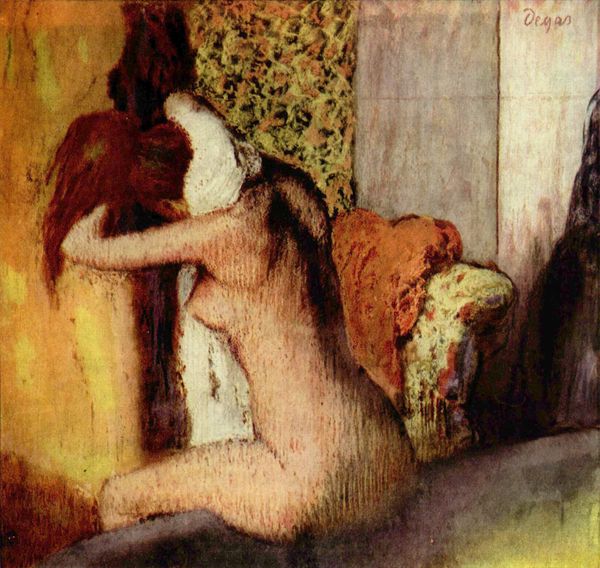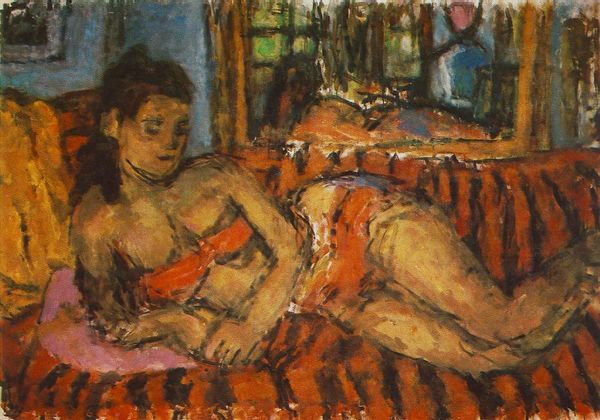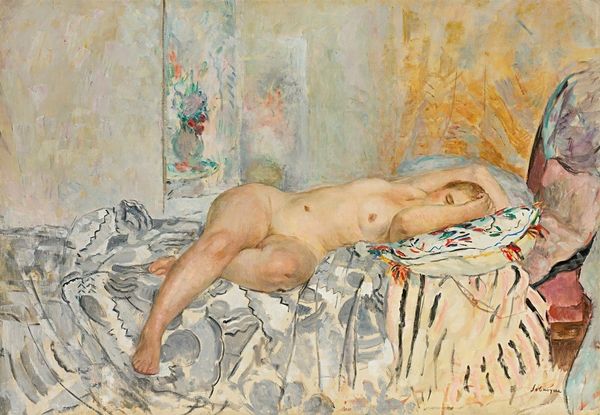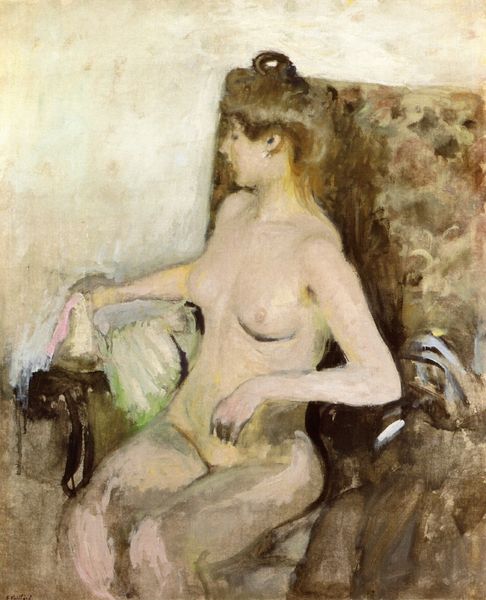
pastel
#
impressionism
#
figuration
#
oil painting
#
france
#
human
#
genre-painting
#
pastel
#
nude
#
watercolor
Copyright: Public domain
Edgar Degas' "After the Bath," captures a woman drying herself. The intimate gesture is not unique to Degas; consider how the motif of the bathing woman has echoed through art history. The symbol of the bath carries its own weight. From ancient Roman bathhouses to Renaissance depictions of Susanna, the act of bathing has long signified cleansing, vulnerability, and revelation. The intimate act of cleansing oneself becomes a public display, pregnant with symbolism. Look at the way she is kneeling. We can trace this posture across time and cultures, a pose that signifies humility. It recurs in religious art as a sign of reverence but here, the same pose is devoid of overt piety. Has the meaning of this symbol been diluted or has it been distilled? Consider how subconscious processes shape the interpretation of such symbols. "After the Bath" engages viewers, prompting deep, subconscious associations. This simple scene connects us to centuries of art. The gesture has resurfaced, evolved, and taken on new meanings.
Comments
No comments
Be the first to comment and join the conversation on the ultimate creative platform.

